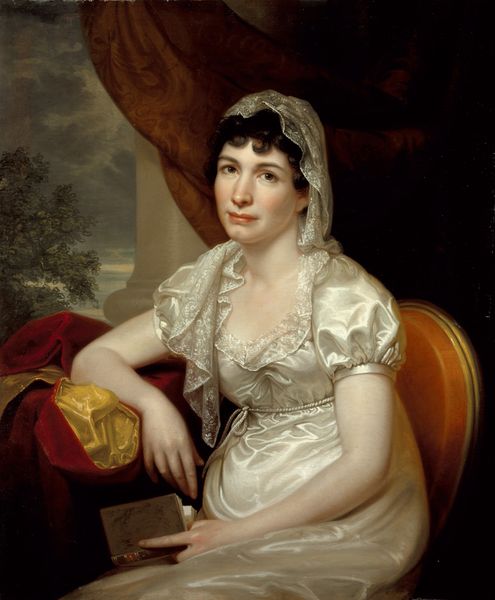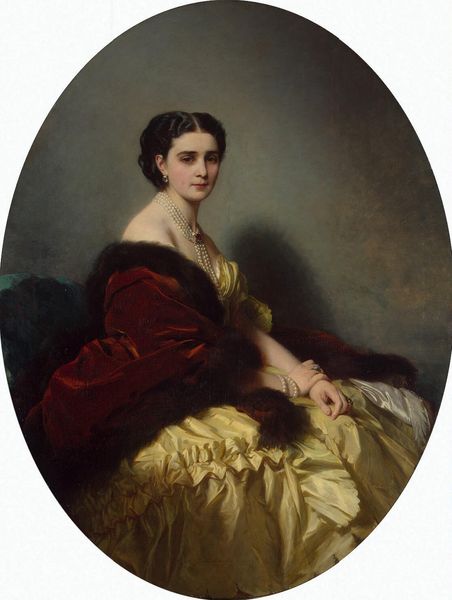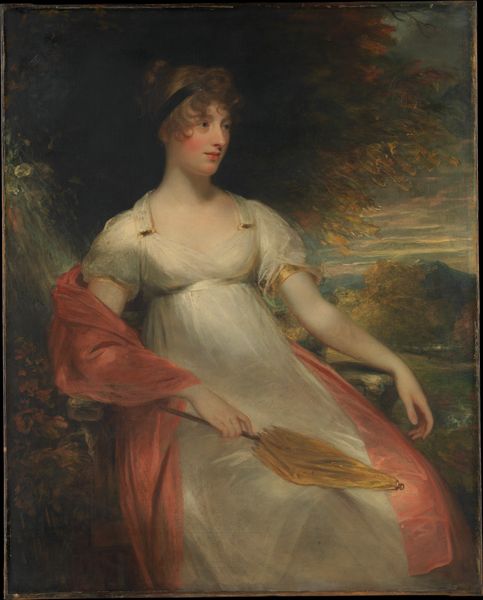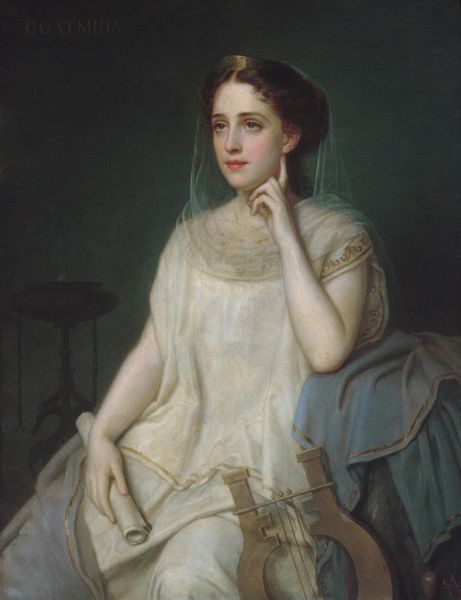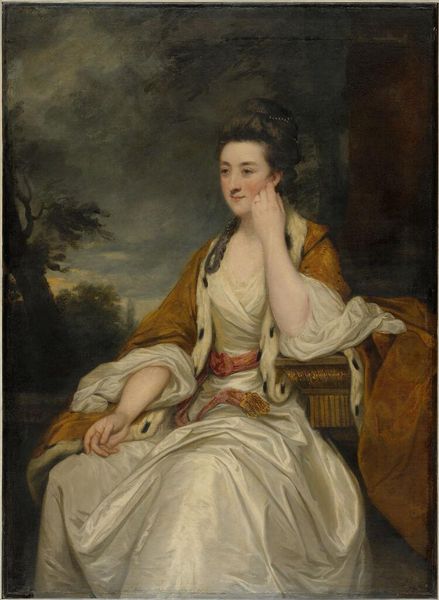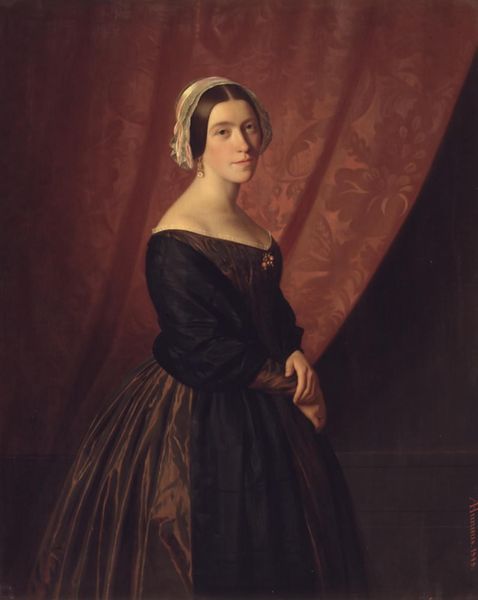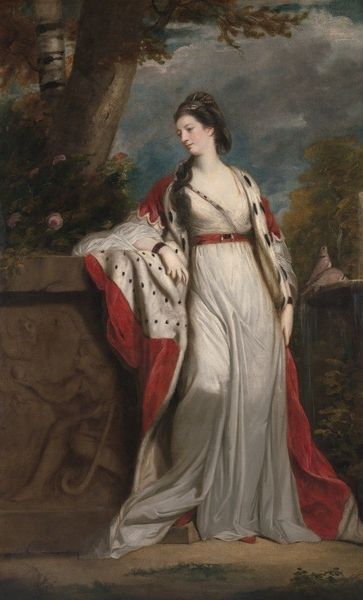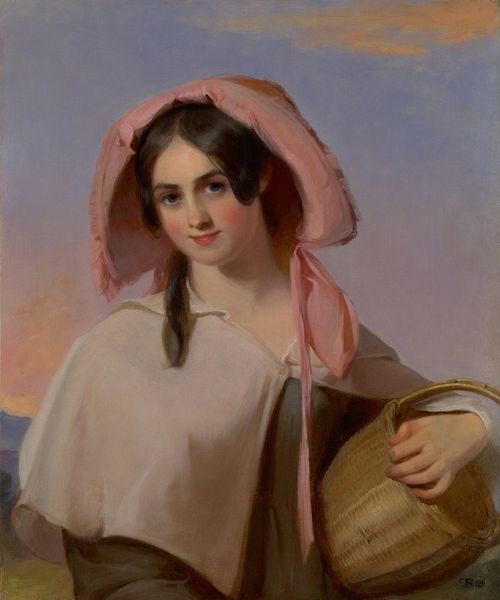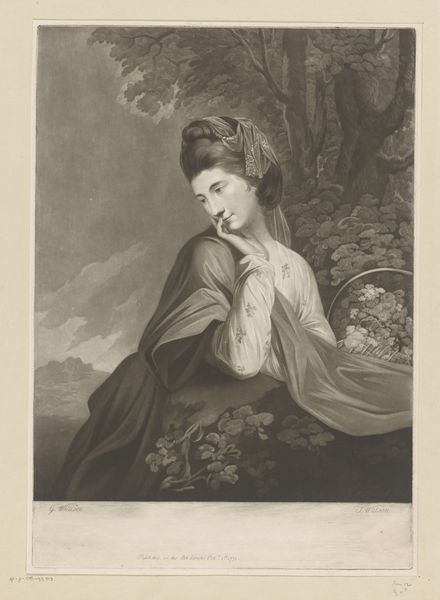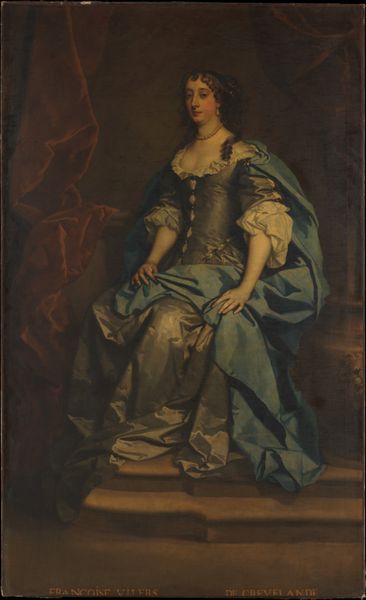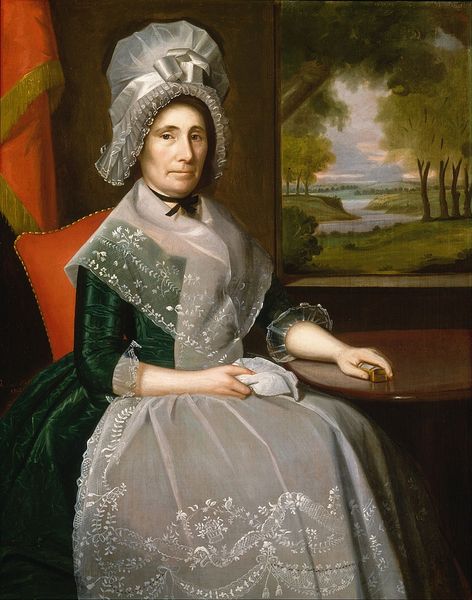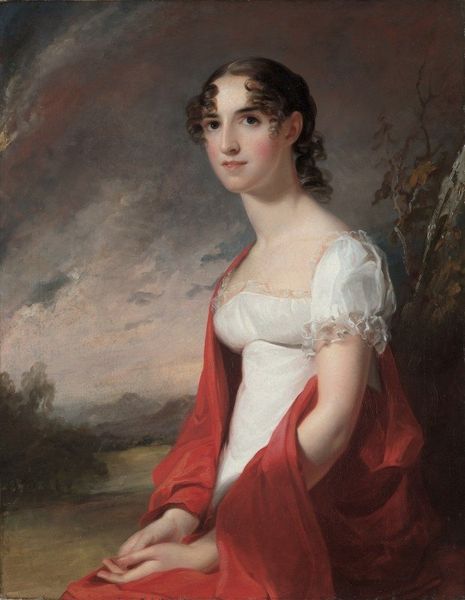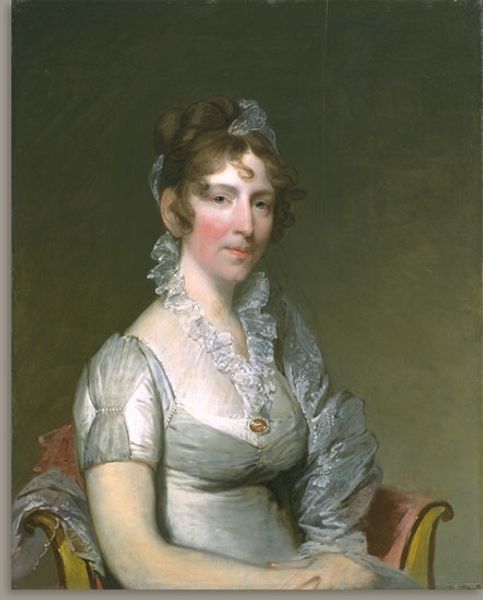
oil-paint
#
oil-paint
#
landscape
#
figuration
#
oil painting
#
romanticism
#
history-painting
#
academic-art
#
portrait art
Copyright: Public domain
Curator: Before us, we have Samuel Morse's 1837 oil painting, "Susan Walker Morse (the Muse)," a portrait of the artist's daughter currently residing here at the Met. Editor: It's certainly a striking image! The sheer volume of that gold dress, the stark white pages she's holding, create an immediate sense of…luxurious labor, almost. What kind of work, exactly, are we meant to envision here? Curator: Well, placing Susan within the context of her father's life, it's interesting to consider the multiple layers of representation. Morse was, of course, famously transitioning from artist to inventor during this period. Susan, in this painting, becomes both daughter and allegorical figure. Editor: So she is meant to embody a certain artistic pursuit. I notice the almost theatrical rendering of her dress. How that fabric is depicted signals luxury through the sheer effort required to create it; the layers of production are right there on display! It also dominates the composition quite a bit. Is it supposed to emphasize the sitter’s societal status? Curator: Undoubtedly. And that lacework around the shoulders, along with the trappings of high culture—the landscape vista, the urns. She’s very much staged within a specific societal milieu, a feminine ideal carefully curated, as much object as subject. Consider the male gaze inherent in its creation. This painting was exhibited at the National Academy of Design a year after her mother’s untimely passing in 1836. How did the circumstances around her mother’s death shape her destiny and sense of self as presented to us? Editor: A sudden loss during that time would surely have impacted the family's means. So, by showcasing his daughter in such finery, perhaps Morse was communicating a continued success, stability upheld despite the difficult family dynamics surrounding grief, expectations of mourning, even gender roles in those expectations of performing personal loss publicly. It is all so performative when viewed through today's standards. Curator: It speaks to how inextricably linked individual identity is to societal pressures. I see this portrait almost as a negotiation of familial roles and the performance of both individual and collective identity during a period of significant personal and national transition. Editor: Absolutely. And for me, it highlights how intertwined notions of class, grief, labor, and the presentation of self become when filtered through material possessions. The weight of those garments isn't just on Susan; it is an external display of family value for all to consume. Curator: Precisely! The painting allows for layered interpretations of individual identity and the socio-economic conditions that shaped its presentation, not to mention the performance that is art in that time period. Editor: Thank you. Looking at it through these different lenses has made the painting much more nuanced.
Comments
No comments
Be the first to comment and join the conversation on the ultimate creative platform.
